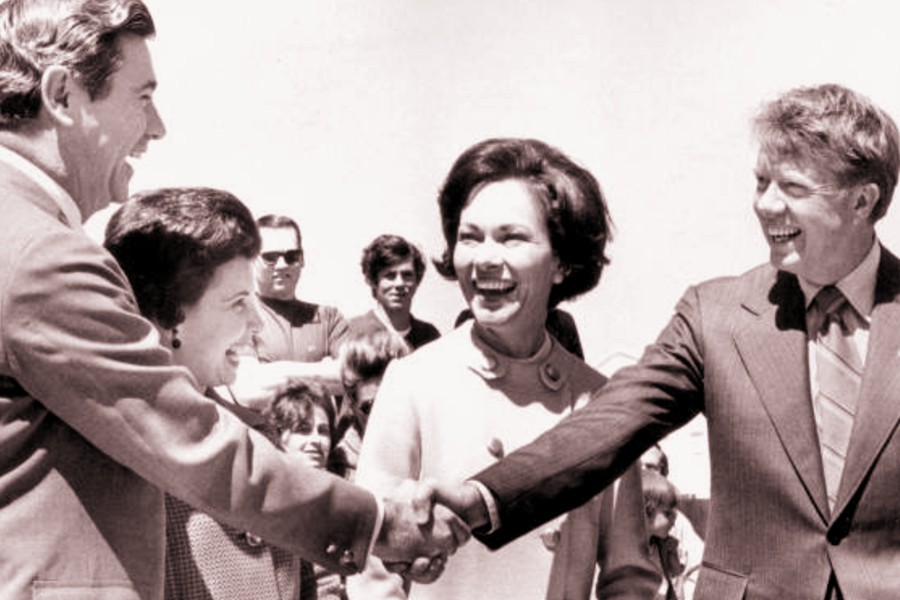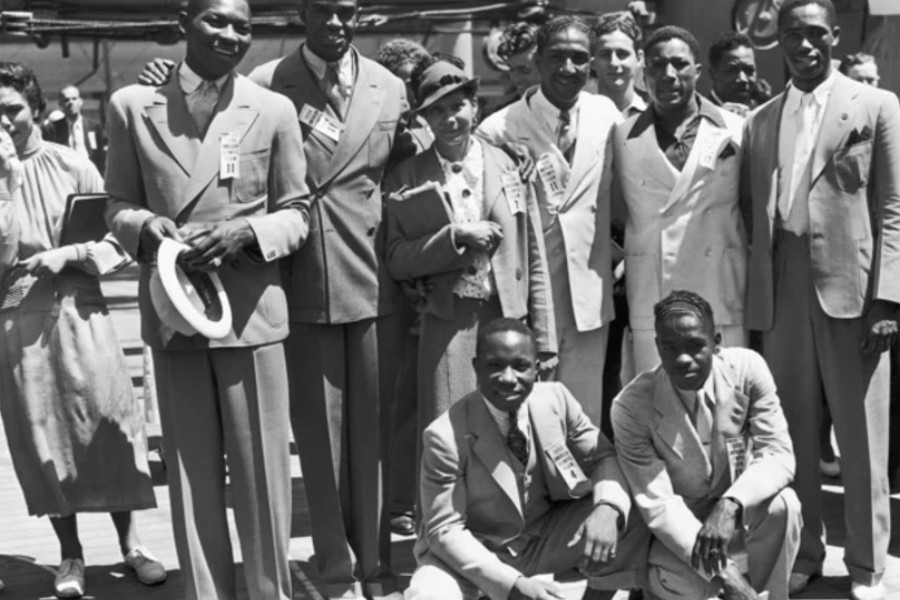 Liesl Schillinger wrote in the New York Times that Harlem’s:
Liesl Schillinger wrote in the New York Times that Harlem’s:
Leo Lerman once turned down an invitation from the king and queen of Spain so he could dine with the Condé Nast publishing magnate Donald Newhouse. Another time, he flatly rejected a “Narcissus naked” Yul Brynner, who was begging him to sleep with him and pathetically murmuring, “Why won’t you? Why won’t you?” The first, and probably only, woman Lerman ever saw naked was his great friend Marlene Dietrich (who loved Harlem night life), at a time when she was having what he described in a diary entry as an “intense affair with Yul.” According to Lerman’s lifelong love and partner, the artist Gray Foy, Dietrich had asked Lerman into her bath to demonstrate “the female anatomy.” Apparently, Lerman took in the view with respectful attention, if not passion. But he was not always so above-it-all. Meeting a young writer at a New York gathering in the mid-1940s, he complied with good humor when the man jumped on his back in a stairwell and demanded a piggyback ride. That man turned out to be Truman Capote. If you are not one of the sun-seeking stems craning out of the thicket of magazine-world Manhattan, this may raise an echoing question for you: Who is Leo Lerman?
Chances are, whoever you are, wherever you live, you have heard of Truman Capote. But unless you’ve spent a good deal of the last half-century working and playing in Midtown Manhattan (or among the choicer palazzi of Venice), you may have failed to hear of his locally larger-than-life contemporary, Leo Lerman. The biggest reason for this is that, unlike Capote, Lerman never published a novel, memoir or true-crime book, a failure for which he reproached himself throughout his life. “Almost all that I have earned is by non-writing,” he wrote despondently in 1960 — by which time he had been a writer and cultural tastemaker at Vogue, Mademoiselle, Playbill and other magazines for two decades. “What wrongs I have done to such talents as I have,” he continued. “What self-indulgence and waste.” He added, “I must stop fumbling for words here and get to work. I lack all discipline.”
But as you will discover in “The Grand Surprise: The Journals of Leo Lerman,” a magnificent arrangement of his unpublished memoirs and correspondence, a man can write a lot, not writing. After Lerman died in 1994, not long after his 80th birthday, his partner, Foy, discovered hundreds of notebooks secreted in a warehouse, file drawers and even a trunk under the piano he’d converted to a desk, “stretching from the months before his first Vogue assignment (in 1941) to a year before his death.” Stephen Pascal, Lerman’s assistant at Vogue, Vanity Fair and Condé Nast for more than 12 years, and later, his amanuensis, found that “what the diverse books had in common was illegibility.” Pascal arrived at Condé Nast for a job interview in 1981 and found himself in the presence of a living legend. At their first meeting, Lerman regaled Pascal with stories of Berlin in the 1920s and of the émigrés that “Mr. Hitler’s War” had sent to New York, recalled his early days at Vogue and Harper’s Bazaar in the ’40s, and rhapsodized about his beloved friend, the heiress and actress Eleonora von Mendelssohn. “She had been dead 30 years, yet he was still talking about his ‘Ela’ as though she had just left the room,” Pascal recalls in his introduction to the book. Bewildered and enthralled, he sat in wonder as Lerman broke the flow of his narrative to suddenly announce, “Give notice where you are,” hailed a passing personnel manager and bellowed, “Work out the details.” Pascal now returns the favor.
For more than a decade, Pascal deciphered and edited his former mentor’s journals with Foy’s help and privy knowledge, and hunted down hundreds of Lerman’s letters. In “The Grand Surprise,” Pascal resurrects and imposes order on a dazzling life in the scene-stealing language of the man who lived it. “How different writing is from thinking, even from planning what one is to write,” Lerman wrote in a morose journal entry in 1978, after spending the day with Lincoln Kirstein and his wife and sister in Connecticut. He went on to blackly complain: “I balloon with words. I grow lardy with words. I am fat — hideously fat — with words.” Pascal has reshaped Lerman’s reminiscences into a heroic physique, and given his subject the posthumous consolation (would that he could have known it) that a hope he confided to himself late in life, in a notebook he did not know would be found, was true: “I did do something extra: I lived. I will live.”
Lerman was a gregarious (over-gregarious, he fretted), self-educated man of culture, born in a Harlem brownstone to a mythomaniac Jewish immigrant family. “We were poor,” he wrote, but “I lived high and rich interiorly.” From earliest adolescence, he knew he was homosexual and that he was highly sensual — inclinations that did not remotely worry his doting, manipulative mother. As a teenager, he overheard “Momma” tell one of his aunts on the phone, “He will never get married.” So what if he’s a “mother’s boy?” she added. “I’m his mother.” He never went to college, but in 1941, when he walked into the offices of Vogue, two words clinched his fate. One female voice, “high, carefully modulated,” uttered the word “Divine.” Another female voice — “postmenopausal, attractively sexy, sandpaper had worked it to a permanently growling invitation,” uttered the word “Debauchery!” Five decades later, Lerman recalled the moment: “I instantly knew that a life of ‘divine debauchery’ should be mine.” He soon came to see that divine drudgery was more like it: “I had arrived, I soon discovered, in a world of surface glamour supported by hard, almost unceasing endeavor.” Too entranced by the world in which he found himself to object seriously to its workload, he leavened his spirits by giving parties for the beau monde and the haut monde, first in a shabby-chic walk-up he shared with his first love, the painter Richard Hunter; later in a brownstone at 1453 Lexington Avenue, where he lived for 20 years with Foy; and then at a sprawling duplex in the Osborne on 57th Street, where they moved in 1967.
Lerman’s parties attracted everyone from magazine editors and writers to Maria Callas, Anaïs Nin, Margot Fonteyn, Frederick Ashton, Cecil Beaton, Diana and Lionel Trilling, Aaron Copland, Gloria Steinem and Leonard Bernstein. To list more names (there are hundreds) sounds pretentious. But Lerman was not pretending; he knew absolutely everyone, and what’s more, absolutely everyone knew him. “I had the kind of life sans anything — very little money — none sometimes — and still the world came and loved coming and was grateful,” he reflected in 1961. Anaïs Nin wrote of him in a diary entry that he “talks like Oscar Wilde, but has a warmth in his glittering dark eyes,” and that his conversation evoked a “magician’s tour de force.” He was “a weather vane, a mask, a pirouette,” she wrote. “And all you remember is the fantasy, the tale, the laughter.” In these pages, Lerman’s words put the fantasy on paper. “I have always existed in a theater of my imagination — so each person in my life has been a character,” he wrote to himself in 1980. In his notebooks, he could convey an entire life in a sentence, in a clause or even in one word: “Colette’s death is like the dousing of a little dependable potbellied stove that miraculously heated you all your life,” he wrote in 1954. Isak Dinesen was “a mesmerizing listener. It was impossible not to tell her the sort of detail you note in a very private diary or do not dare to set down at all.” Edith Sitwell was “feminine in an epicene way, the way some high churchmen are.” Marlene Dietrich was “very beautiful in two sexes simultaneously.” Truman Capote was “so worldly as to be naïve.” Jacqueline Kennedy Onassis was “concussed.” “Ironically, it was his propensity — and gift — for summing others up in a few strokes that probably made him ill suited to be a novelist,” Pascal suggests in his introduction. But as Lerman mused late in life, “the final desolation comes with the realization that life is like fiction.” His certainly was. But even as “The Grand Surprise” invites the reader backstage to revisit the illustrious dramatis personae of his memory, it also reveals the private heart of a public man. In a letter to Foy, Lerman wrote that, when they first met, soon after his romance with Hunter had foundered, “I thought that I had nothing much to give anyone — affection, yes, and some knowledge — but nothing of the deep within. Now my heart (I use this only as a shorthand, a sort of representation) is whole again — richer, fuller. It has been made whole for me, because I have been and I am loved.”
In 1948, in an acid vignette he published in Vogue, Capote gave a thinly veiled portrait of Lerman, disguising him as a popular party-giver named Hilary. “Playing host is his cure-all,” Capote wrote. “Hilary, with his large, spectacular appearance and roaring, giggling monologues, gives even the dreariest occasions a bubbling glamour. Hilary so wants everyone to be glamorous, to be a storybook creature; somehow he persuades himself that the grayest folk are coated with legend-making glitter.” But reading this book, you are tempted to conclude that it was Capote’s gray that was an illusion; the glitter was real. You just had to be Leo Lerman to see it.
Photo credit: Young Leo, the journalist who had begun working for Conde Nast (when it was still owned by Conde Nast himself) in 1937 when he was still in his 20s.
Updated: May 6, 2007
Become a Harlem Insider!
By submitting this form, you are consenting to receive marketing emails from: . You can revoke your consent to receive emails at any time by using the SafeUnsubscribe® link, found at the bottom of every email. Emails are serviced by Constant Contact




























